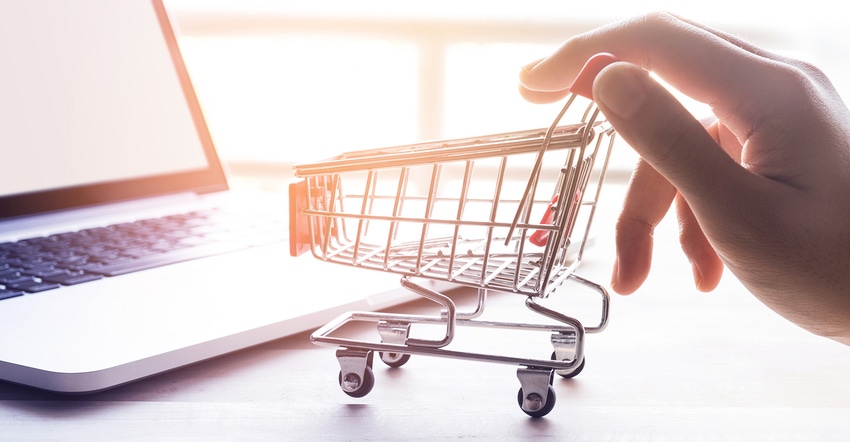Join Marshall Hayes, founder and CEO of Amplio Digital, for a top-level analysis of the rapidly growing e-commerce world, with a focus on what you need to do to sell successfully on Amazon. Here’s a hint: Take a deep dive into the data.
April 6, 2018

“Providing exceptional customer service is key. It’s really important. You want to follow the consumer, you want to give them what they want, and they’ll grow with you for however long your brand is around.”
—Marshall Hayes, founder & CEO, Amplio Digital
Part 1: Current state of grocery retail, e-commerce and why digital matters
Highlights:
Walmart still owns the retail space, followed by Kroger, Albertson’s and Costco. Amazon only has 2 percent of the grocery market. (2016 estimated percent of market share of U.S. grocery retail)
Online is a very different story: Amazon leads the category, with the next 30 brands in total not even coming close. (2016 estimated U.S. online grocery sales in billions)
In 2018, online grocery sales are projected at $40 billion.
Only 6 percent of consumers buy groceries online, but brick-and- mortar grocery is experiencing a disruption challenge.
Amazon had a 43.5 percent market share of 2017 U.S. e-commerce.
-----
Part 2: The buyer’s journey, marketing investment trends, third-party adoption levels
Highlights:
Spending power is declining for Baby Boomers, with millennials—craving speed and convenience—coming up.
Marketing dollars are shifting to Amazon and other digital strategies more quickly than they’re shifting elsewhere.
Some 90 percent of consumers are on Amazon in some form (across grocery, health and personal care, beauty, pet and apparel categories).
Leverage existing traffic from marketplaces vs. generating your own (roughly 67 percent of households are Amazon Prime customers).
-----
Part 3: What consumers want; does Amazon play nicely with others?
Highlights:
Pricing has the biggest impact on the consumer purchase decision; product availability and assortment are next.
Amazon is so successful because it puts consumers first.
People are getting used to buying everything in one place and getting it quickly.
High ratings on reviews are really important.
A compelling argument for pricing parity.
-----
Part 4: Amazon data analysis, marketing strategies, key takeaways
Highlights:
Study of 165 brands: categories really do matter, beyond just using KPIs.
What reviews cost you: from 4 stars to 3.5 stars equals about 35 percent of your sales.
Assess your distribution with e-commerce in mind.
Measure everything along your buyer’s journey (“data as the steel thread”).
-----
Part 5: Q&A
Highlights:
Why are some sites faring better than others? (Facebook has greatly improved its demographic analysis in recent years which leads to better ROI.)
E-commerce challenges for frozen products.
Brand registry is a good thing to get if you want more control on Amazon.
Where this data came from and the tools used to gather it.
This session—Optimizing Your Digital Marketing Strategy with Data—was recorded at Natural Products Expo West 2018. Click "download" below to access the presentation slides.
About the Author(s)
You May Also Like


